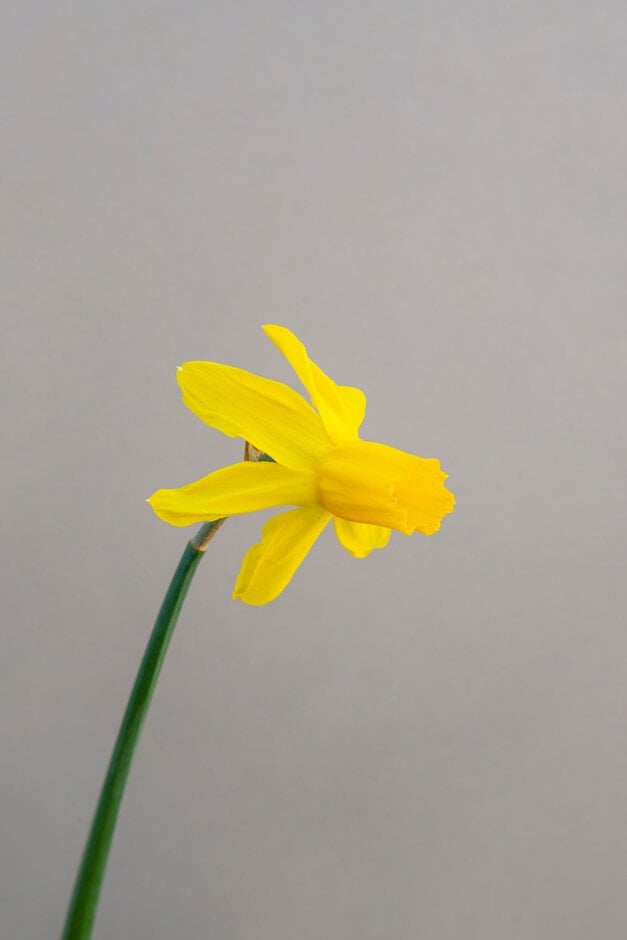Narcissus 'Little Witch' (6)
daffodil 'Little Witch'
'Little Witch' is a vigorous cyclamineus daffodil, 22cm high, with grey-green leaves and long-lasting, golden-yellow flowers, 4cm across, with strongly-reflexed perianth segments and long, ribbed coronas, in early spring and mid-spring
Size
Ultimate height
0.1–0.5 metresTime to ultimate height
2–5 yearsUltimate spread
0.1–0.5 metresGrowing conditions
Moisture
Moist but well–drainedpH
Acid, Alkaline, NeutralColour & scent
| Stem | Flower | Foliage | Fruit | |
| Spring | Gold Yellow | Green Grey Silver | ||
|---|---|---|---|---|
| Summer | ||||
| Autumn | ||||
| Winter |
Position
- Full sun
- Partial shade
Aspect
South–facing or East–facing or North–facing or West–facing
Exposure
Exposed or Sheltered Hardiness
H6Botanical details
- Family
- Amaryllidaceae
- Native to GB / Ireland
- No
- Foliage
- Deciduous
- Habit
- Clump forming
- Potentially harmful
- Harmful if eaten, skin irritant. Wear gloves and other protective equipment when handling. Pets (dogs, cats, tortoises): Harmful if eaten, skin irritant. For further information and contact numbers regarding pets, see the HTA guide to potentially harmful plants
- Genus
Narcissus are bulbous herbaceous perennials with linear leaves and leafless stems bearing flowers, which may be solitary or in umbels, with 6 spreading perianth segments and a cup or trumpet-shaped corona
- Name status
Accepted
- Horticultural Group
- Cyclamineus daffodils have solitary flowers, with reflexed perianth segments and usually a long corona
How to grow
Cultivation
Plant bulbs at one-and-a-half times their own depth in autumn, slightly deeper in light soils and in grass, in well-drained soil that is moist in the growing season in spring, in light dappled shade or sun. See daffodil cultivation for further advice
Propagation
Propagate by division: separate and replant offsets as the leaves fade in early summer, or in early autumn before new roots are produced
Suggested planting locations and garden types
- Cottage and informal garden
- Patio and container plants
- City and courtyard gardens
- Coastal
- Low Maintenance
- Banks and slopes
- Cut flowers
- Flower borders and beds
- Underplanting of roses and shrubs
Pruning
Deadhead as the flowers fade but allow the leaves to die down naturally
Pests
May be susceptible to slugs, narcissus bulb fly, narcissus eelworm, and bulb scale mite
Diseases
May be susceptible to narcissus basal rot, narcissus leaf scorch or daffodil viruses
Love gardening
Sign up to receive regular gardening tips, inspiration, offers and more
View our Privacy Policy
Get involved
The Royal Horticultural Society is the UK’s leading gardening charity. We aim to enrich everyone’s life through plants, and make the UK a greener and more beautiful place.
